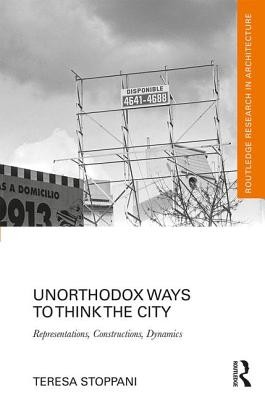
- We will send in 10–14 business days.
- Author: Teresa Stoppani
- Publisher: Routledge
- ISBN-10: 0415724384
- ISBN-13: 9780415724388
- Format: 15.6 x 23.4 x 1.3 cm, hardcover
- Language: English
- SAVE -10% with code: EXTRA
Reviews
Description
This book argues that architecture and the city and their processes can be better understood by drawing categories from disciplines that exceed the architectural and urban cultural context. It performs an open intellectual reading that traverses architecture and architectural theory, but also art theory and history, cartography, philosophy, literature and cultural studies, to unfold a series of 'figures' that are ambiguously placed between the representation and the construction of space in architecture and the city.
The paradigm and philosophy, the island and the city, the map and representation, the model and making and the questioning of form performed by dust, are explored beyond their definition, as processes that differently make space between architecture and the city and are proposed as unorthodox analytic techniques to decipher contemporary spatial complexity.
The book analyses how these 'figures' have been employed at different times and in different creative disciplines, beyond architecture and in relation to changing notions of space, and traces the role that they have played in the shift towards the dynamic that has taken place in contemporary theory and design research. What emerges is the idea of an 'architecture of the city' that is not only physical but is largely defined by the way in which its physical spaces are regulated, lived and perceived, but also imagined and projected.
EXTRA 10 % discount with code: EXTRA
The promotion ends in 21d.02:03:52
The discount code is valid when purchasing from 10 €. Discounts do not stack.
- Author: Teresa Stoppani
- Publisher: Routledge
- ISBN-10: 0415724384
- ISBN-13: 9780415724388
- Format: 15.6 x 23.4 x 1.3 cm, hardcover
- Language: English English
This book argues that architecture and the city and their processes can be better understood by drawing categories from disciplines that exceed the architectural and urban cultural context. It performs an open intellectual reading that traverses architecture and architectural theory, but also art theory and history, cartography, philosophy, literature and cultural studies, to unfold a series of 'figures' that are ambiguously placed between the representation and the construction of space in architecture and the city.
The paradigm and philosophy, the island and the city, the map and representation, the model and making and the questioning of form performed by dust, are explored beyond their definition, as processes that differently make space between architecture and the city and are proposed as unorthodox analytic techniques to decipher contemporary spatial complexity.
The book analyses how these 'figures' have been employed at different times and in different creative disciplines, beyond architecture and in relation to changing notions of space, and traces the role that they have played in the shift towards the dynamic that has taken place in contemporary theory and design research. What emerges is the idea of an 'architecture of the city' that is not only physical but is largely defined by the way in which its physical spaces are regulated, lived and perceived, but also imagined and projected.


Reviews